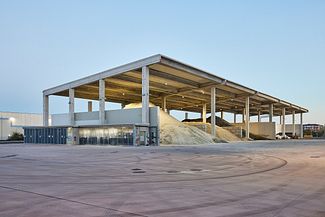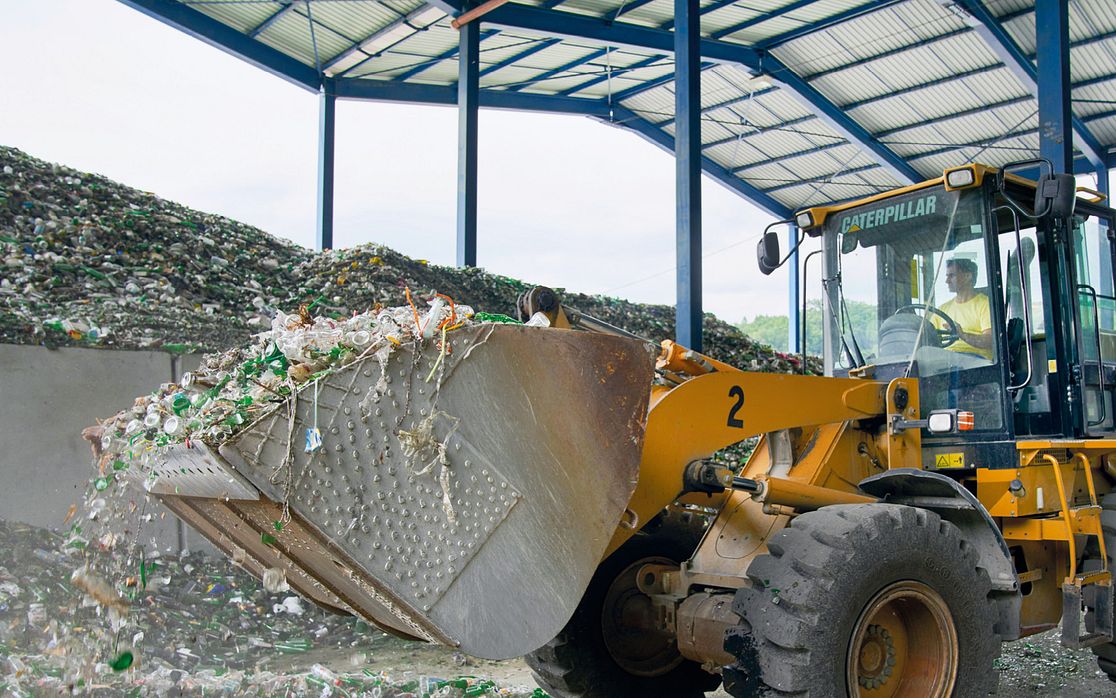Saving energy and emissions
Glass and recycling – a perfect duo. Glass is a natural material that is fully recyclable without any loss of quality. Using recycled glass conserves valuable primary resources, saves energy, and significantly reduces carbon emissions. This is why we are certain that recycling is not only economically sound, but also indispensable ecologically. With this in mind, we improve our recycling processes every day – for a more sustainable future.
Glass recycling is worth doing, and not only because it avoids large quantities of waste that would otherwise have to be disposed of. Recycling also saves several million tonnes of primary resources every year in Europe alone and reduces the CO2 emissions generated during glass production. This is because recycled glass melts at much lower temperatures than primary raw materials such as quartz sand. The higher the proportion of recycled glass used in production, the greater the energy-saving effect: every 10 percent of recycled glass saves 2.5 percent of energy and 5 percent of carbon emissions.
Recycling, combined with technical innovations, has already made a significant contribution to improving the environmental footprint of glass production in recent decades. Today’s glass containers are 30 per cent lighter than they were 20 years ago. Additionally, their production generates 70 per cent fewer carbon emissions than it did 50 years ago – thanks in large part to recycling. Most recently, an average of 80.1 percent of all glass packaging was collected for recycling and 92 percent of it actually recycled throughout Europe. The majority of packaging glass used in Europe is not only recycled in Europe, but in the country of use. This keeps transport short and has an additional positive effect on emissions. But we aim even higher and are working to further increase the proportion of recycled glass in production. As part of our SBTi (Science Based Target initiative) target, we have committed to reducing emissions from our production (Scope 1 emissions) by 50.4 percent by 2032, with increased use of recycled glass playing a key role in achieving this goal.
In this way, we are also helping our customers meet the upcoming requirements of the European Union's Packaging & Packaging Waste Regulation (PPWR): from 2030, all packaging placed on the market in the European Union must be recyclable – a standard that glass already fulfils. From 2035, the actual recycling rate for all packaging must be at least 55 percent. In addition, packaging will be categorised according to its recyclability. On this basis, Extended Producer Responsibility fees will be applied. To support our customers in achieving their recycling targets and meet future requirements, we are increasing the proportion of recycled glass in our production. We are also committed to establishing and optimising effective glass recycling infrastructure in the countries where we operate.
For a more sustainable circular economy
When it comes to glass recycling, we are pioneers. Not on the Yukon River, but with Swiss containers. For us and the environment, discarded glass containers are at least as valuable as gold. After all, the aim of a sustainable circular economy is to return resources to production after an individual product has reached the end of its life cycle. We have been pursuing this goal since the 1970s. At that time, we were the first to set up a recycling system for glass in Switzerland. Since then, we have been making the most of the glass we collect for our customers – and the environment.

From old to new
Today, we consistently focus on recycling at all our sites. Recycled glass is now the most important material going into glass production at Vetropack, currently averaging 56 percent in our national companies (calculated according to the formula of the European Container Glass Federation FEVE). Across all countries, there is a common precondition for turning the collected glass back into a valuable resource for new glass packaging: quality and adherence to proper sorting are crucial. Above all, it is essential that only packaging glass ends up in recycling containers – household glass, for example a drinking glass, has different material properties and cannot be processed into glass packaging. Ceramics or stoneware, as used for plates or vases, present a particularly big problem in the recycling process as they cannot be sorted out magnetically and, unlike plastics, are just as heavy as glass. However, ceramics, stone and porcelain have different melting points and lead to inclusions in the glass – causing tension and possible breakage in the finished product. Depending on the type, closures and caps can be sorted out more or less easily and should be removed if possible. Separating glass by colour also contributes to effective glass recycling, as flint glass can only be made from recycling pure flint glass. Unsorted glass can only be melted down into green glass. In 2023, we used an average of 43 percent recycled glass for the production of flint glass, 65 percent for brown glass and as much as 69 percent for green glass.
Wrong colours and foreign bodies are separated out in the processing plant. The glass breaker grinds the cullet – the technical term for crushed recycling glass – to the ideal grain size for the melting process. Other foreign materials and oversized grains of glass are separated out in the screener. Metal and ceramic parts are removed using a magnetic drum and metal and ceramic separators, while paper and other light materials are removed by the extraction system. After a final check, the prepared cullet is moved on into glass production to become new bottles or jars.
Many approaches, one goal
As recycling systems nevertheless differ from country to country across Europe, we work with local partners to continuously improve the processes for collecting, transporting, and processing recycled glass. By investing in new sorting and recycling facilities at our sites, we are doing everything we can to optimise the recycling of the glass we collect. Our goal at all sites is to further increase the proportion of recycled glass in our production. Because our contribution makes a difference.

Further information
In addition to our national partners, we work with many organisations and initiatives on a transnational level to promote glass recycling throughout Europe.
Find our partners and further resources here:
Recycling news

